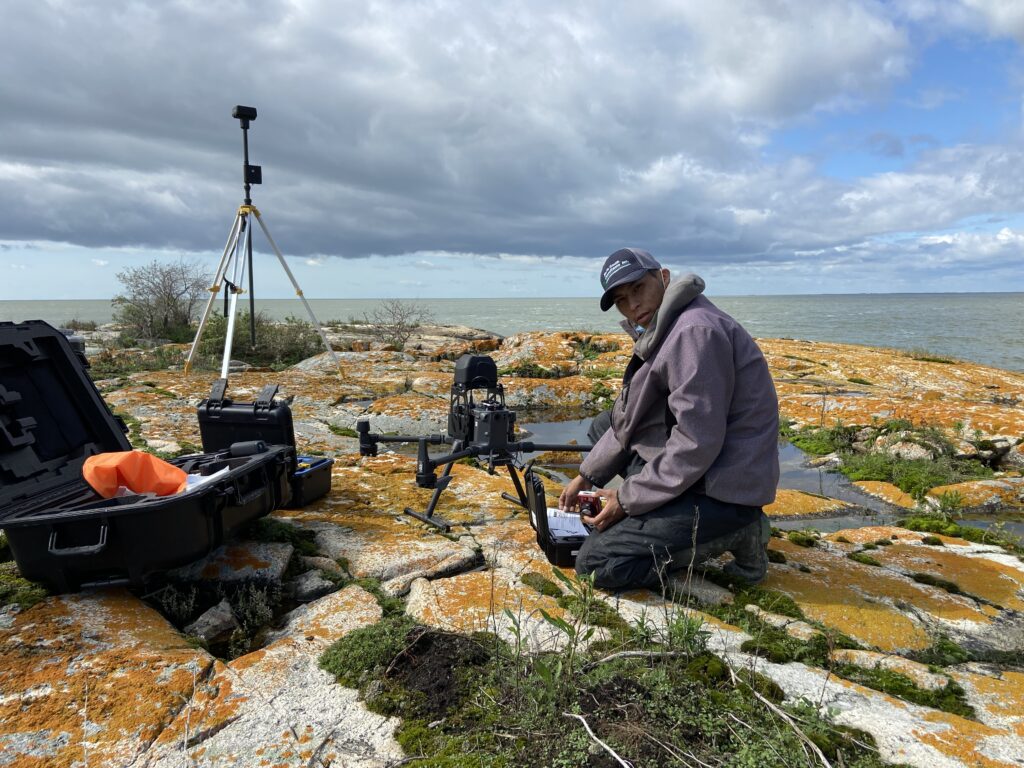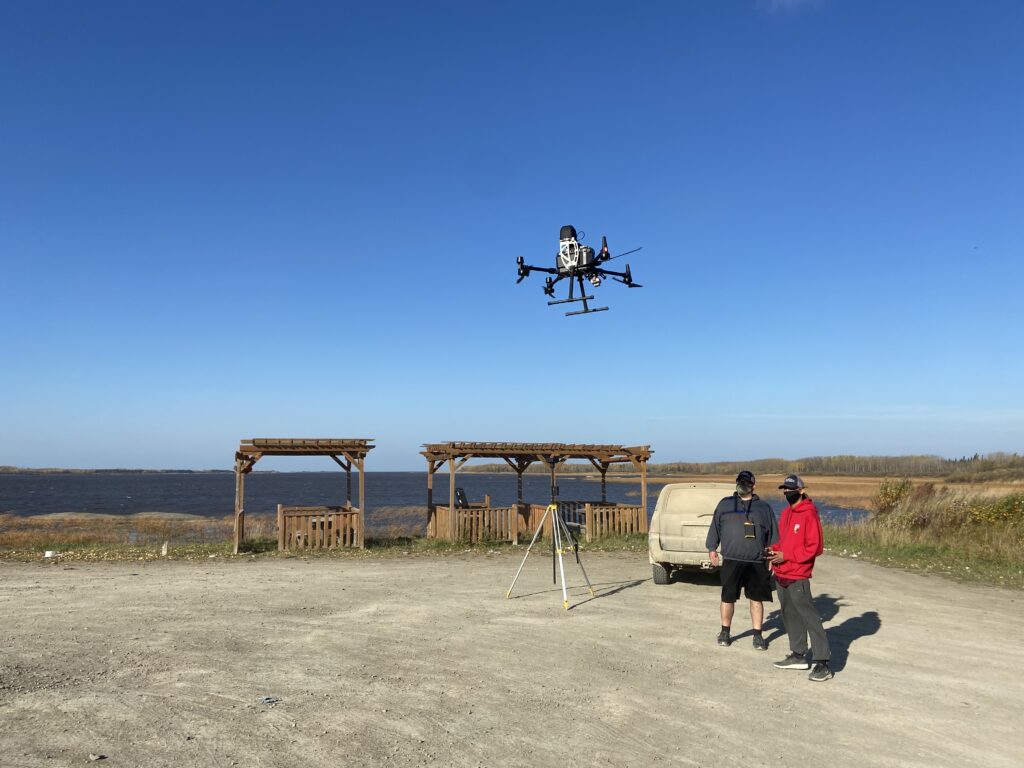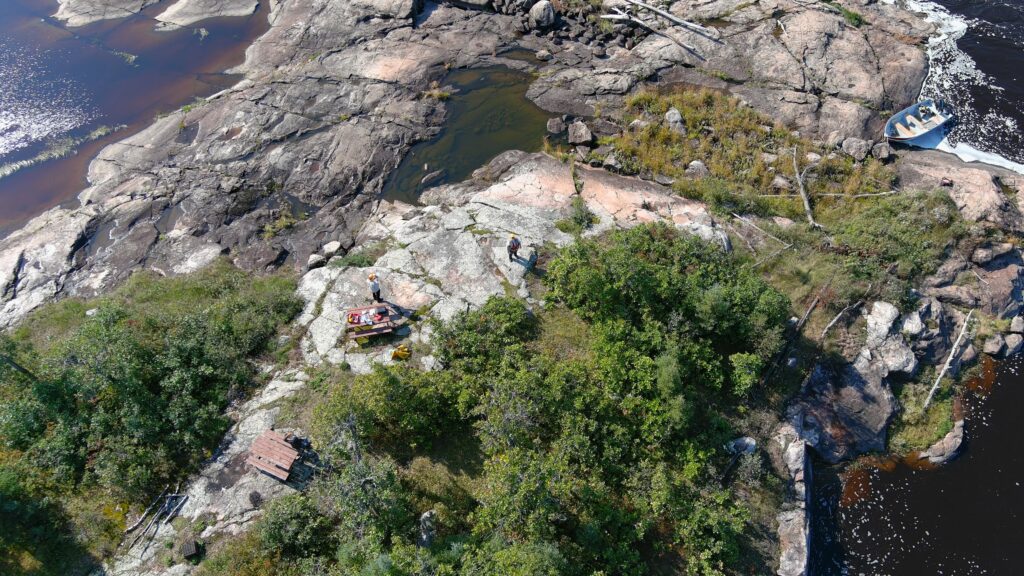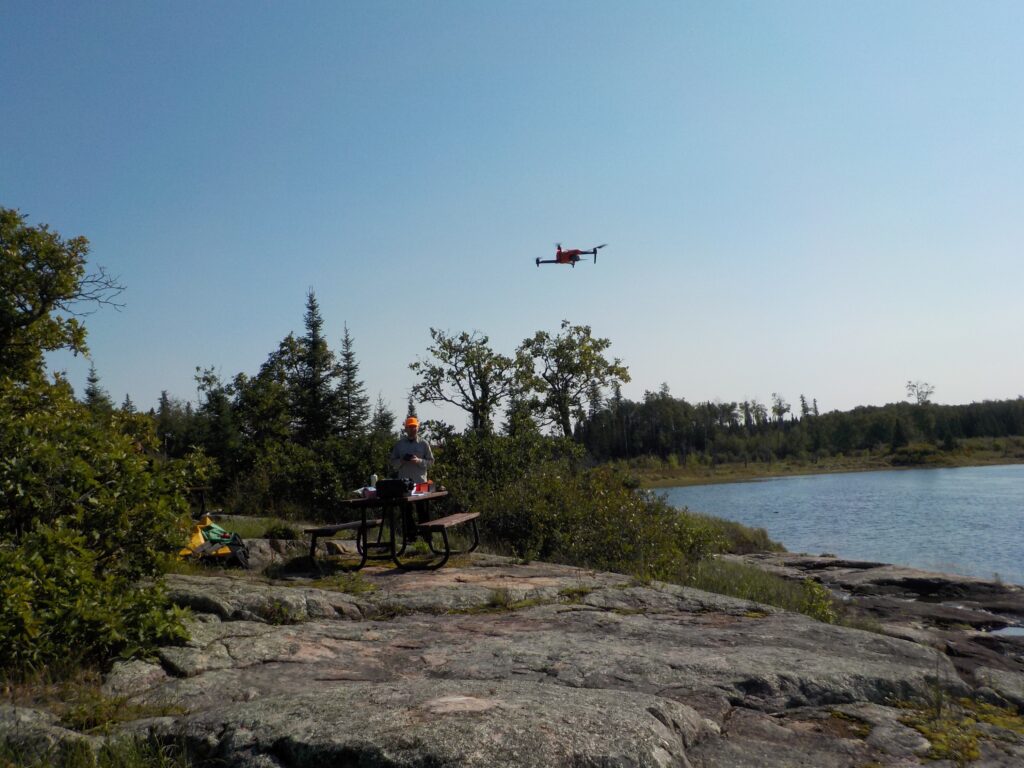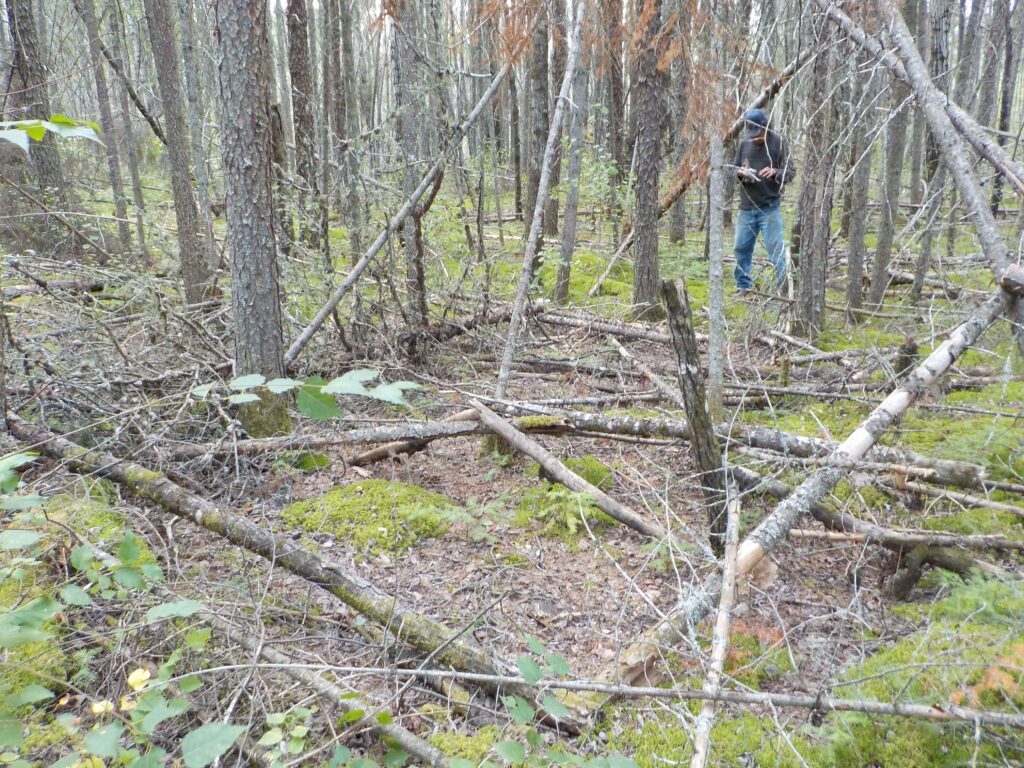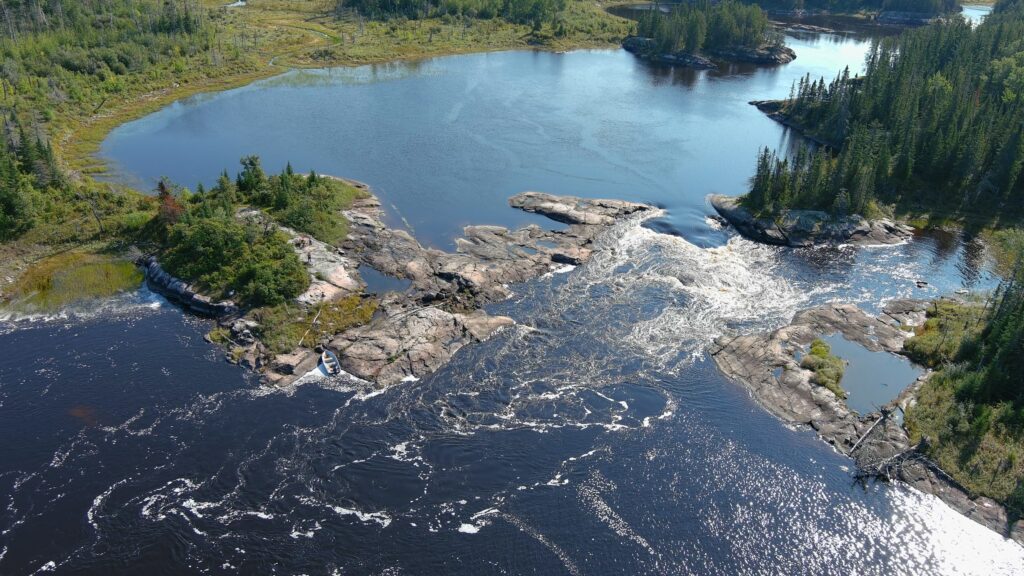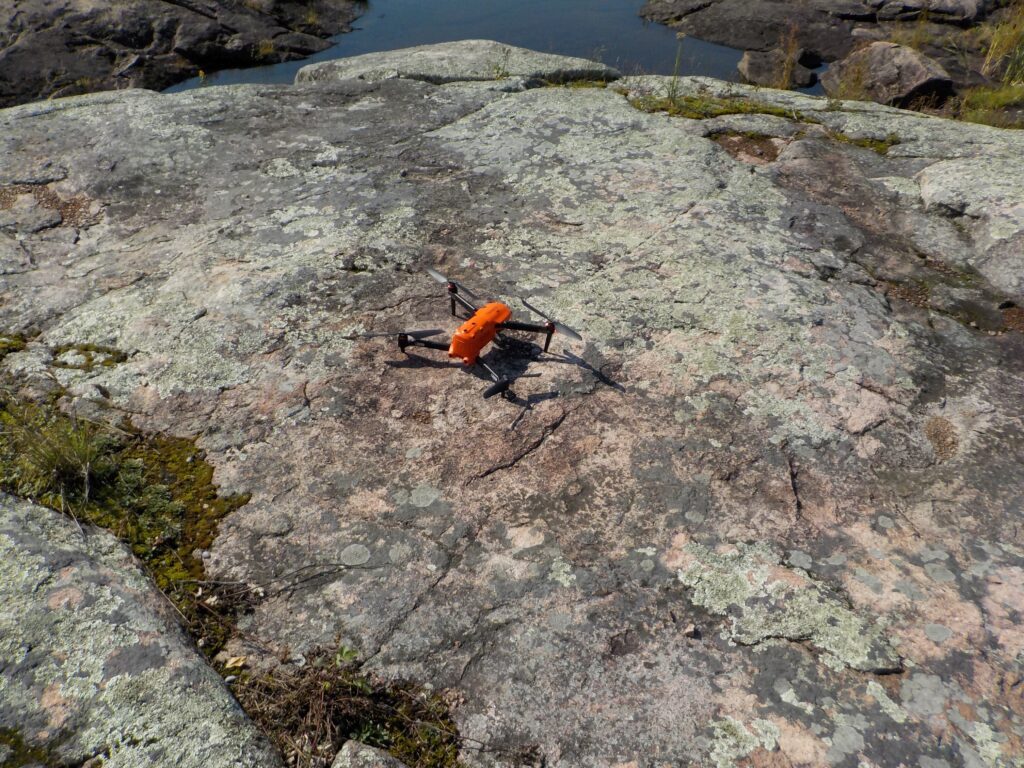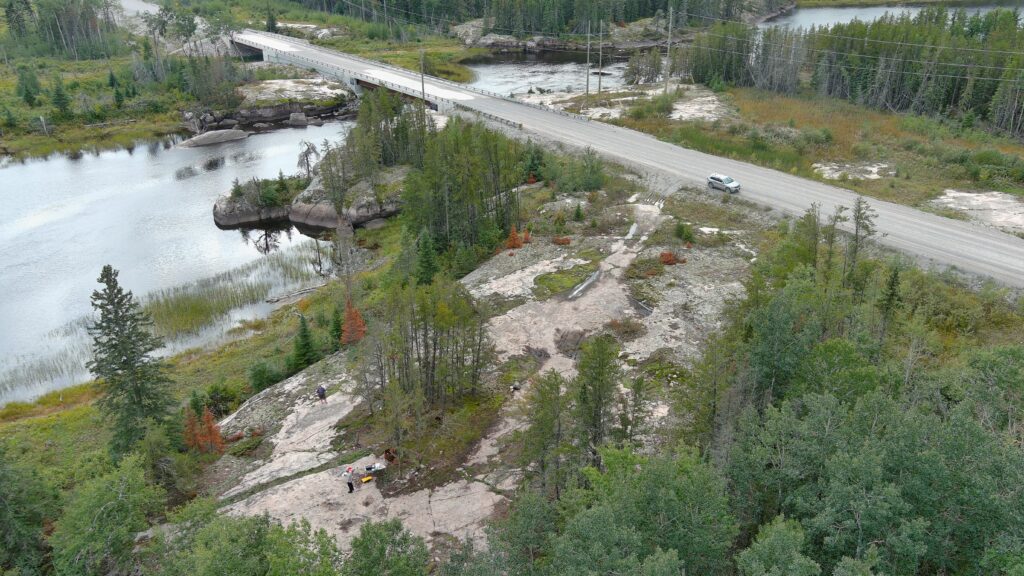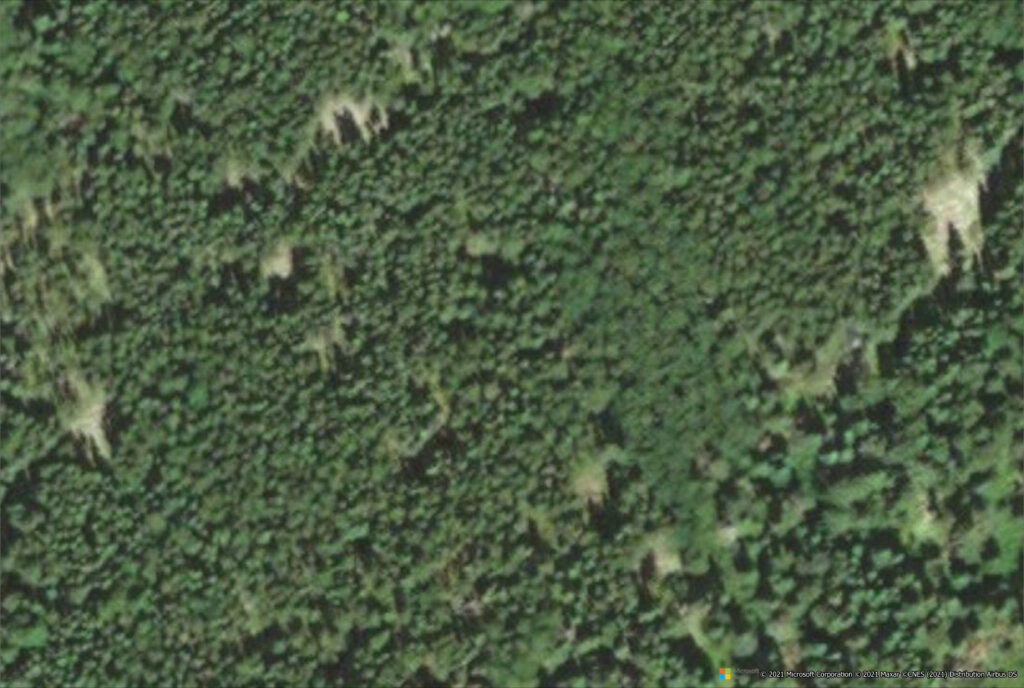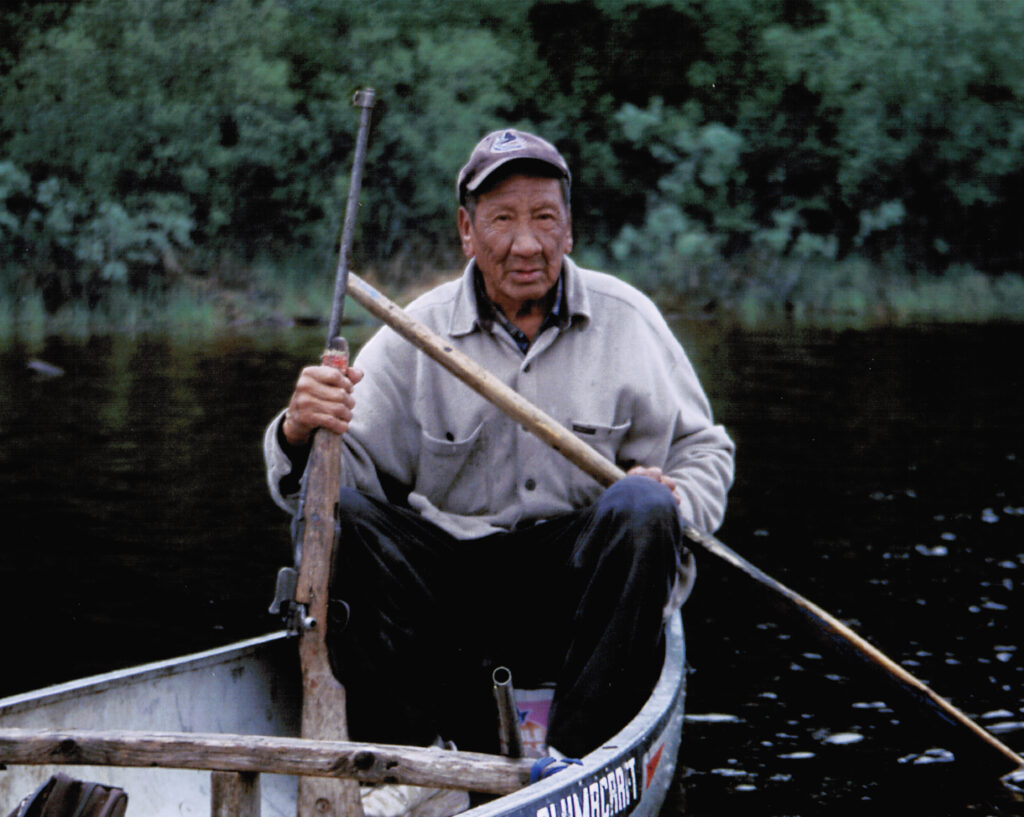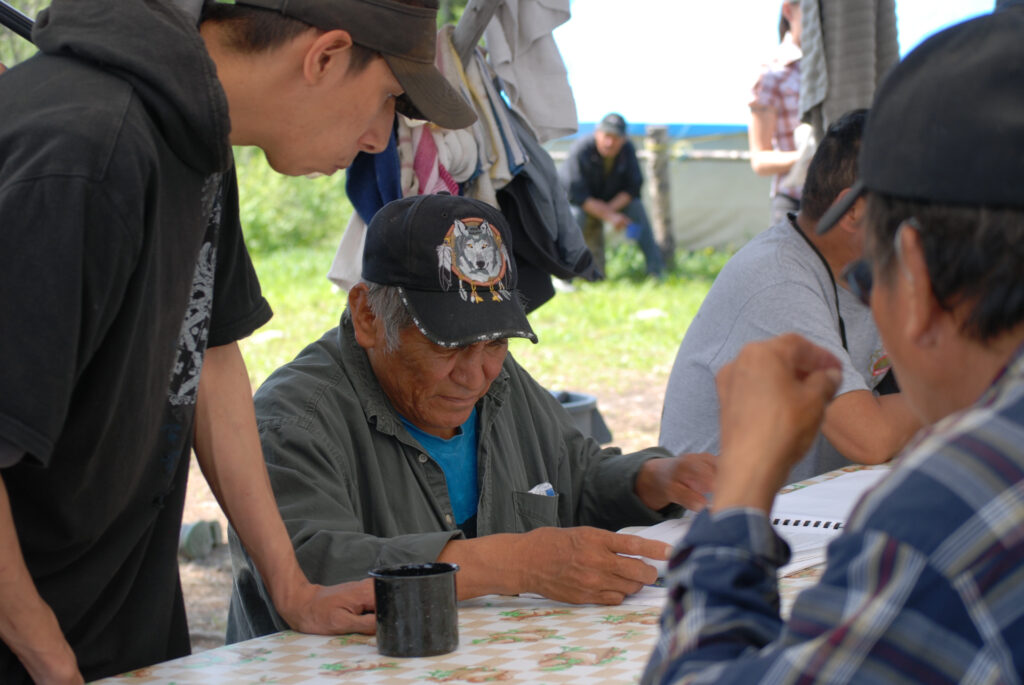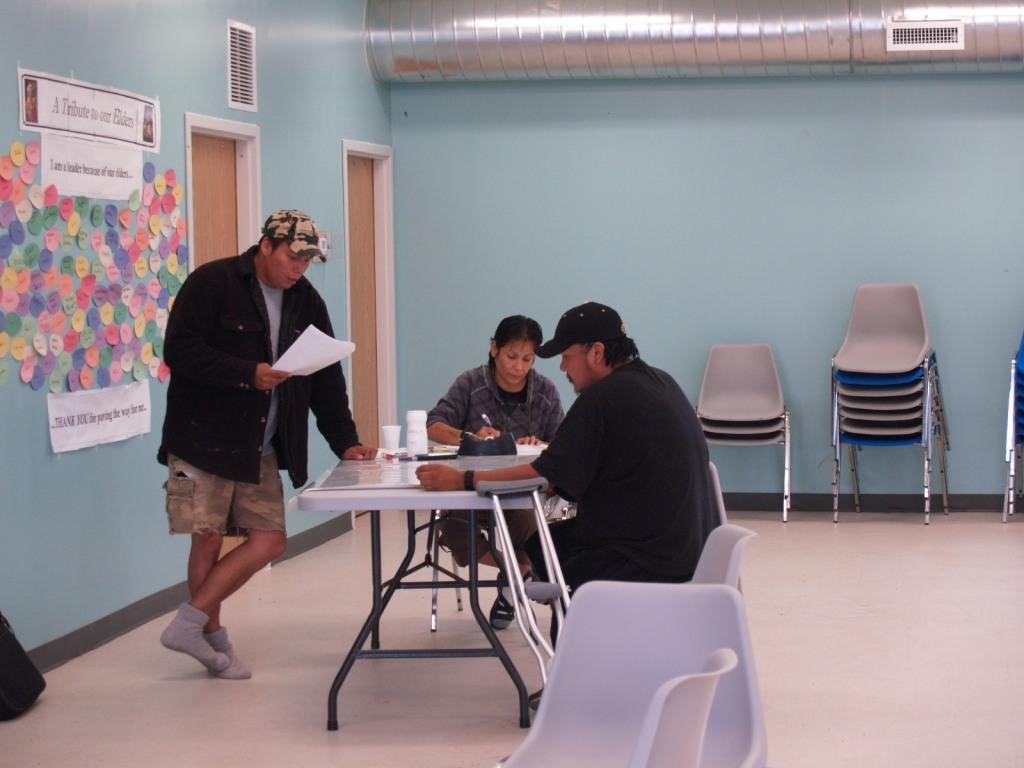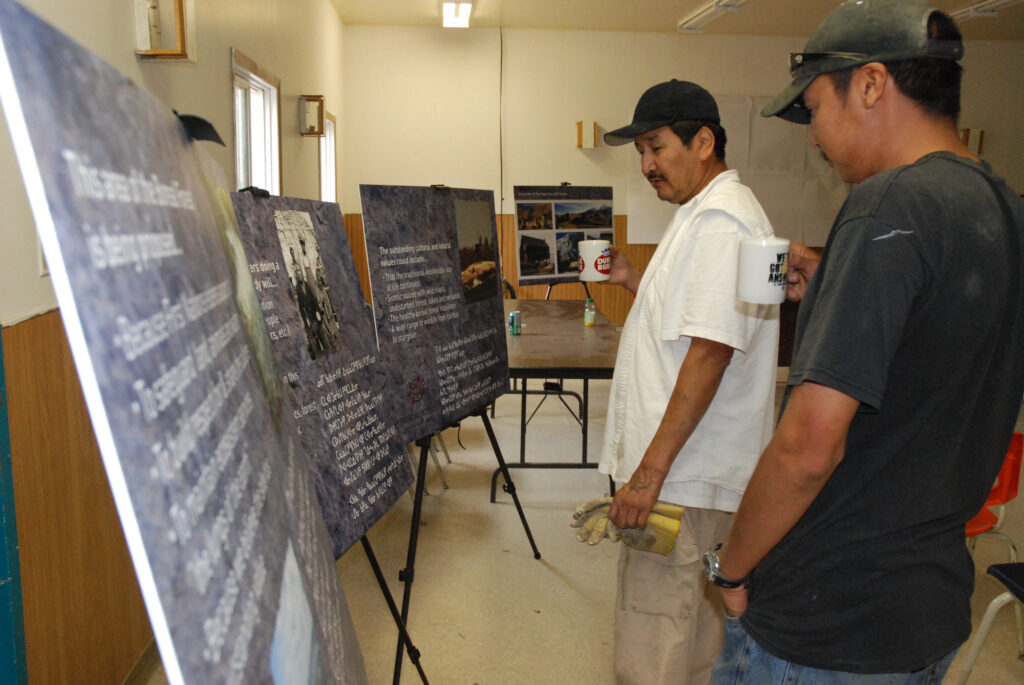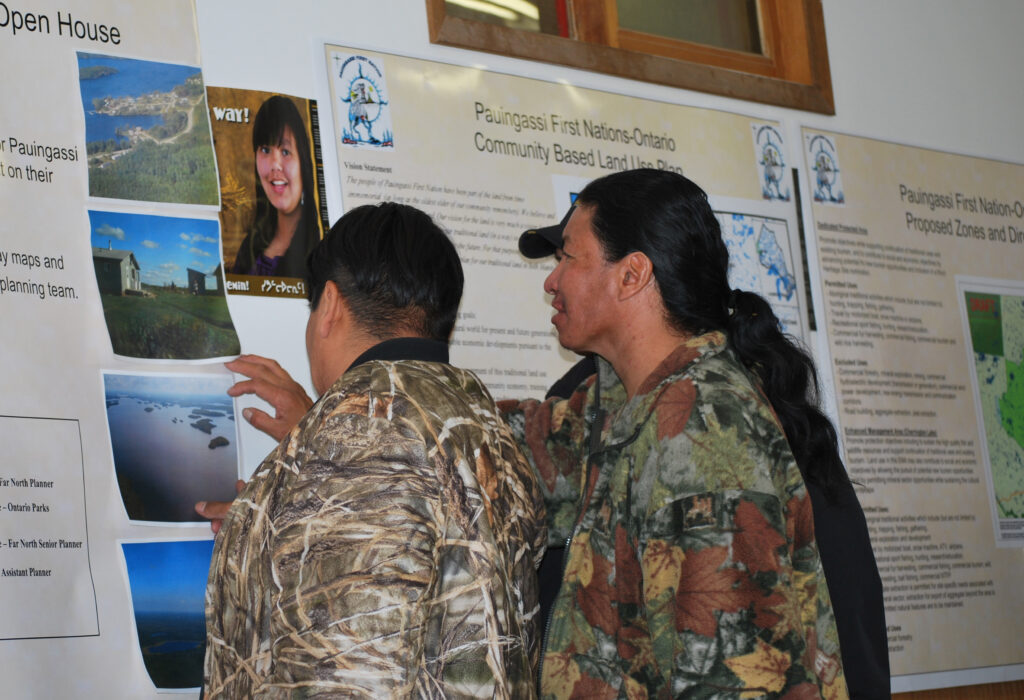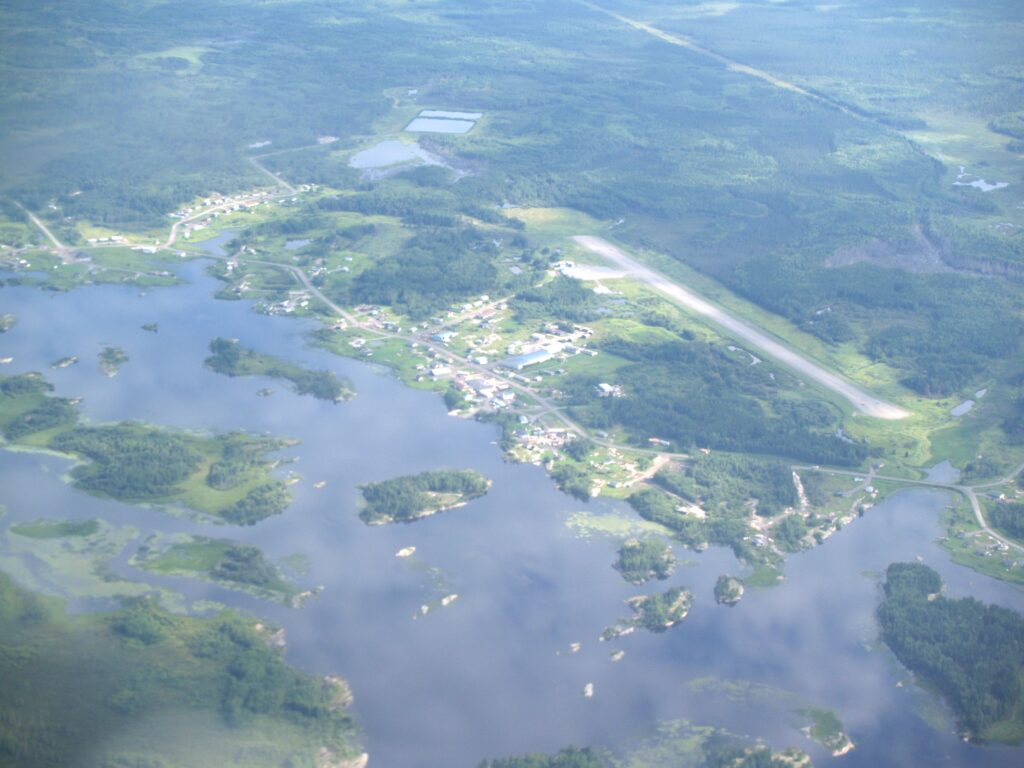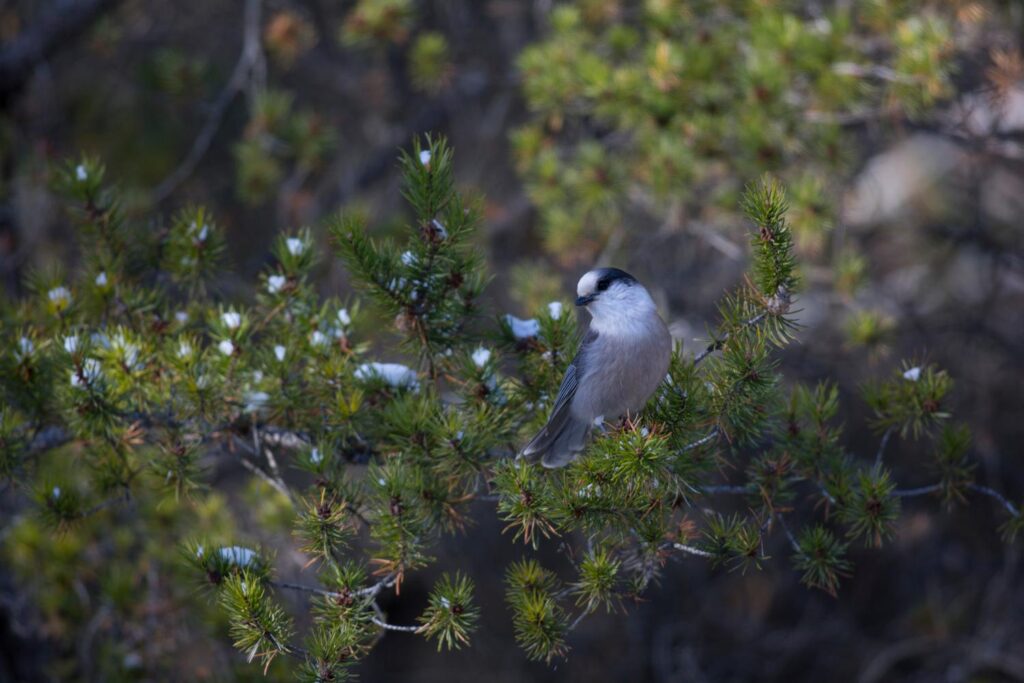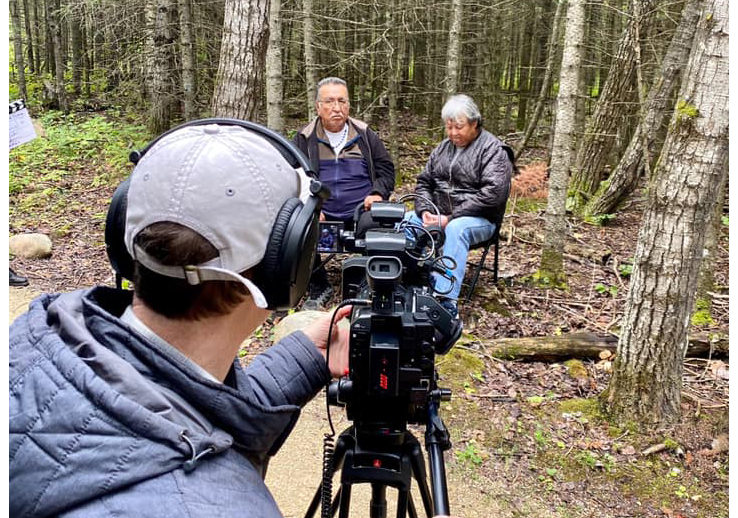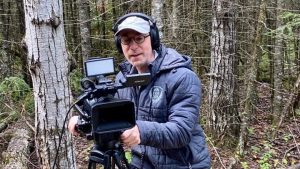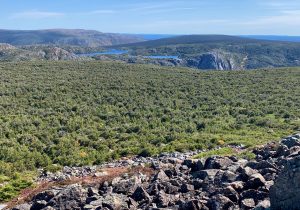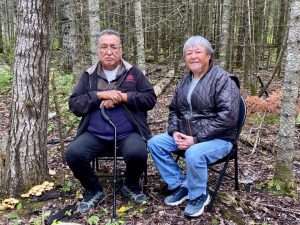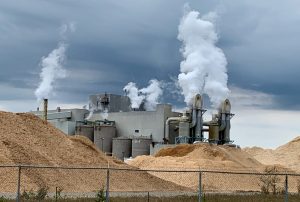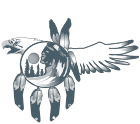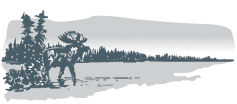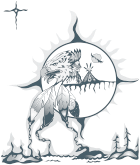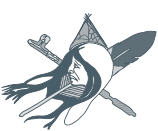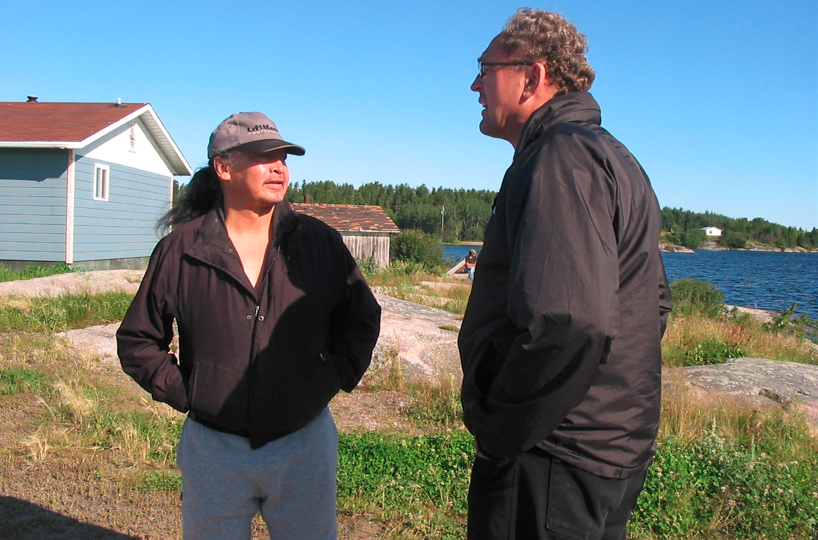
Genealogy has soared in popularity in recent years as people around the globe use DNA tests and ancestry services to understand their heritage and personal histories. One man is on a quest to learn as much as he can about the lineage of community members in Pimachiowin Aki, and says it comes with unique challenges.
“Elders, who possess much of the knowledge, may have limited continued time with us,” cautions Gerald Neufeld (Kaahkaapish), who grew up in Pauingassi First Nation and has been working with his father Henry (Ochichaahkons) for years to help Anishinaabeg trace their roots. “Without Elders’ knowledge of history, progress in some key areas of research is at risk of coming to an end.”
Using decades-old photographs, recorded information and memories of others, Gerald is sharing and gathering as much information as possible. In an interview, he explains the importance of his work.
1. How are Elders in Pimachiowin Aki helping you with your work?
Elders usually know their family history going back at least two generations. They’re able to provide information on photographs and share knowledge of family connections from a time before photographs. For generations earlier than grandparents, my observation is that knowledge levels of ancestral history drop off.
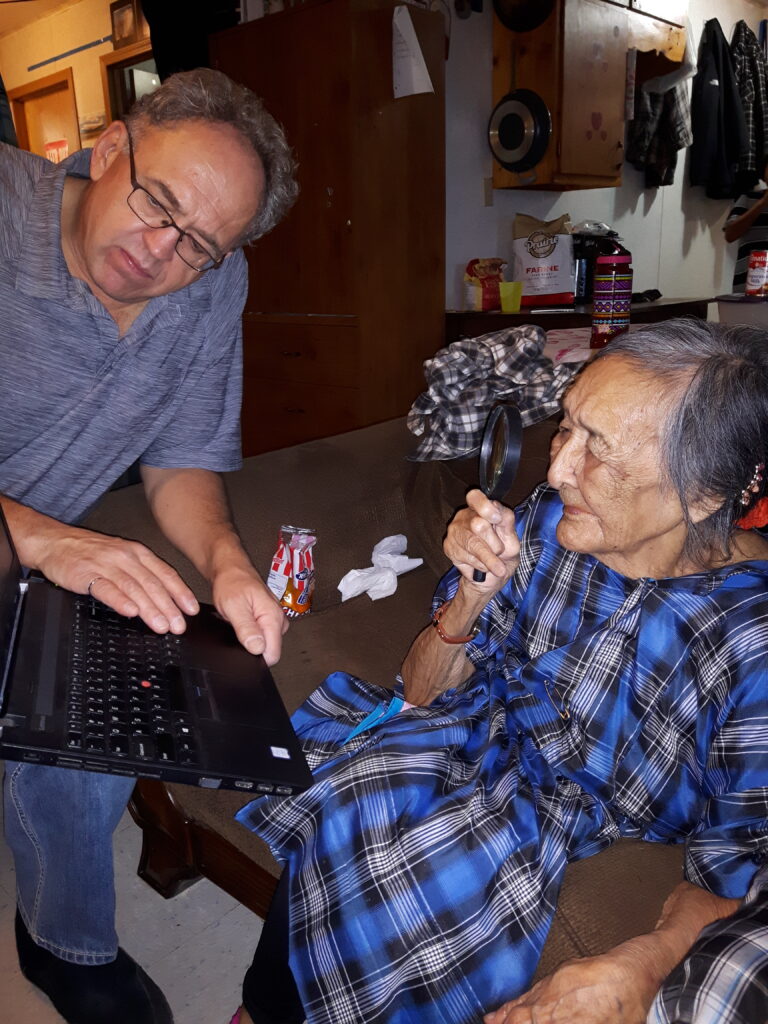
2. You and your father have given close to 75 genealogical presentations to communities and schools in Little Grand Rapids First Nation and Pauingassi First Nation over the past 30 years. Please explain how a ‘Cool Jobs’ presentation got you started.
During the early ‘90s I began developing a focused interest in photos my dad had taken as well as a few Hallowell* photographs he had collected.
Omishoosh School at Pauingassi First Nation invited me to lead a presentation on employment opportunities. I had anticipated a fine, sunny day in June being an impediment to my success with the ‘Cool Jobs’ presentation, and my backup plan entailed switching to a presentation on ancestral photographs taken by my dad in the ‘50s and ‘60s. The ancestral photograph presentation was a hit! Students became immediately attentive and asked a lot of questions. From that trip, I realized that photos of Elders showed promise of something bigger. However, it took several years of tinkering with the idea before it evolved into the presentation format I currently use—a PowerPoint with well-labeled photographs.
*Alfred Irving Hallowell was an anthropologist who studied Ojibwe culture

3. What is the most profound or memorable experience you have had giving a presentation?
One experience that stands out is at Little Grand Rapids in October 2018. We took a lunch break during our community presentation. While doing research to prepare a response to a question, I landed on a website with a fundraiser pamphlet. It featured Hallowell photograph F052, an image of Little Grand Rapids resident Maggie Duck (Nenawan); daughter of John Duck. Feedback from Little Grand Rapids suggests she may be a daughter of Kiiwichens (John Keeper, Sr.) of Little Grand Rapids.
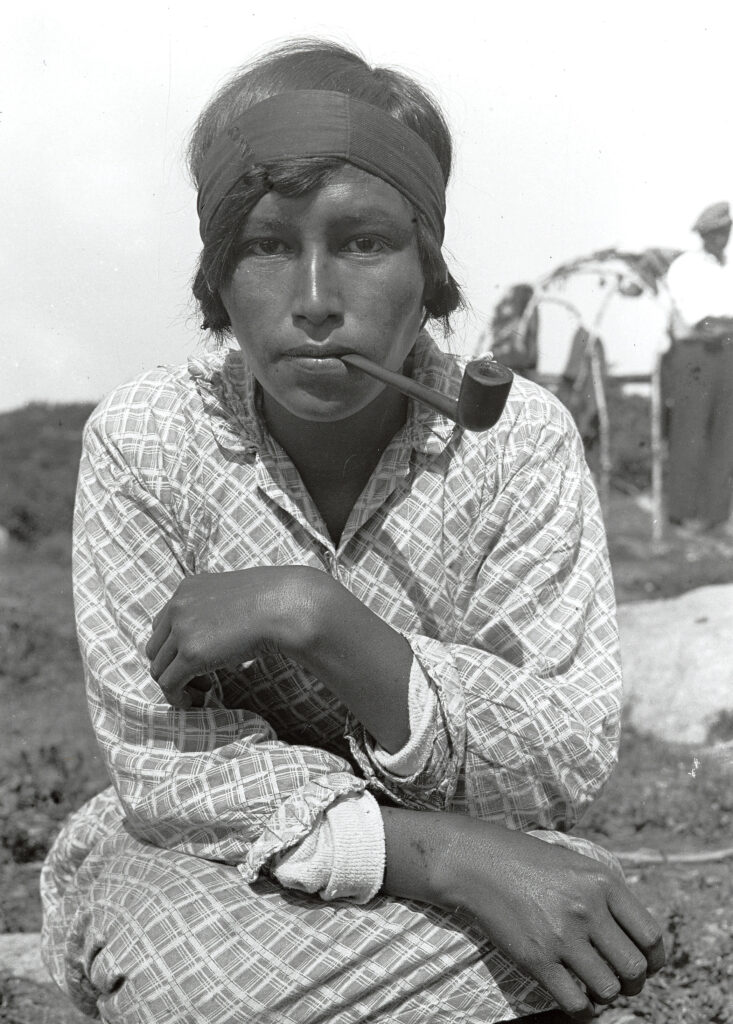
This sparked an interesting dialogue about rights the owners of the photograph should have versus the person photographed.
Another example took place in the Little Grand Rapids sub-office in Winnipeg. I mentioned to a former Chief that I had photographs of his grandmother and great-grandparents. He hadn’t known their names or that photographs existed. I promised to deliver him digital copies and he was very pleased!
4. What discovery stands out as most fascinating for you and families whose ancestry you have traced?
An item that is of significant interest to me is the disarray in surnames assigned by Indian Agents in 1891. Typical patrilineal (naming after the father) naming convention was not followed. Consequently, we have a mixture of names that makes it difficult for people of this region to fully understand family connections.
When asking local people about these names, they express frustration with what appears to have been a half-hearted attempt at surname assignment which makes tracing of relatives complicated when it could be straightforward.
For example, the Keepers of Little Grand Rapids First Nation and the Strangs and Turtles of Pikangikum First Nation are fellow clans people—they originate from the same patriarchal head named Pasikwiikaapaw. Yet, based on my inquiries, people have limited knowledge of this.
Surname assignment is often complicated, making it difficult to trace relatives. Example:
Shenawakoshkank—Moose Clan from Pauingassi First Nation
· Oldest son Pishiw becomes Sandy Owen
· Pishiw’s next youngest full brother Ochiimaaso becomes James White, Sr.
· Back to Sandy Owen, several sons are assigned surname Quill (Pikangikum)
· One son is assigned Dunsford (Little Grand Rapids)
· Many are correctly assigned Owen
· Back to Quill, an additional name of Peters was added to some from the next generations
5. In addition to complicated surname assignment, what are the challenges of tracing ancestry in Pimachiowin Aki?
It seems there’s no aspect of this work that provides instant results. Genealogy research is a relatively complex process. It is time intensive and requires attention to detail, but as a picture emerges, the outcome can be quite interesting.
a) Archived Treaty annuity pay-lists
Years of archived information needs to be reviewed to gain information—a review of pay-lists is necessary to identify family characteristics such as individuals’ names and years of birth.
b) Different spellings
From 1875-1891, names on Treaty annuity pay-lists were written mostly in Ojibwe. Indian Agents at the time didn’t always use the same spelling, so tracing names from one year to the next is difficult.
c) Different numbers
In early years, a Treaty reference number was assigned to heads of households where names were given. These reference numbers often changed from one year to the next, which adds an element of confusion to the research.
d) Smudged documents
Aged documents can be difficult to read. Sometimes the writing is smudged.
e) Additional research required
When information is found, it frequently leads to more questions than answers. More research is required, such as:
- Interviews with Elders—having knowledge of the language is an asset in some areas of this work, particularly as it relates to conversing with Elders to validate information
- Reading history books or books written by former residents
- Reviewing material such as Government Archives, Hudson Bay Company Archives, and Church Archives
6. What drew you to the work of recovering lost genealogical history in Pimachiowin Aki?
My hometown is Pauingassi First Nation. I’m intrigued about what life in the area was like long ago.
My dad took many photographs in the ‘50s and ‘60s. Over the years I would make phone calls to people, gathering information and photographs.
What I learned about genealogy is through self-study, my memories, reading books about the region, research on the internet, and discussions with my dad. I had done some earlier work in the ‘90s, however,the first sincere efforts at understanding family connections and genealogies for Pauingassi and Little Grand Rapids areas dates to 2011. I was relatively new to this area of work.

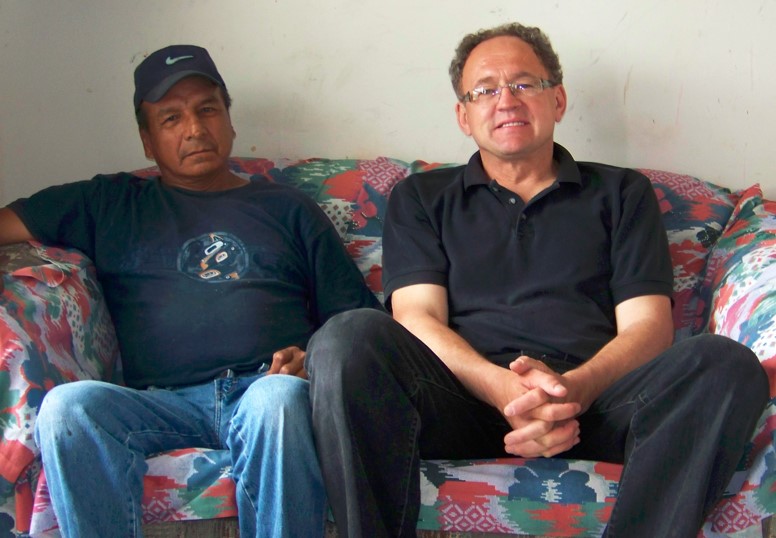
7. How did you begin?
In 2010, Dad and I decided to assemble a photo album for Pauingassi First Nation. It featured nearly 300 labeled photographs that were laminated and bound into books. In 2011 we held evening meetings at Pauingassi to present the photographs by PowerPoint. Three albums were gifted to the community, one to the school, another to the Band Office, and one to the Church.
In 2017, Dad and I presented in Little Grand Rapids First Nation, Pikangikum First Nation and Poplar Hill First Nation. The presentations included Hallowell photographs along with others we had collected. We brought a colour printer and laminator to make copies of photos on request, which families could post in their houses.
8. How many presentations have you given in Pimachiowin Aki over the years?
I estimate up to 75:
- 25 community presentations in Little Grand Rapids First Nation and 15 in Pauingassi First Nation
- 25-35 school presentations. More were presented in Little Grand Rapids than in Pauingassi. This was partially due to the school at Little Grand Rapids having more classrooms
9. What has the reception been like?
People have a genuine interest in the topic. It was clear from the levels of engagement and emotion that occasionally surfaced that we were meeting our objectives of providing valuable presentations. It seems we’ve just scratched the surface in satisfying curiosities and desires for ancestral information. Older photographs are most appealing to the audience.
10. Did school presentations lead to more discoveries?
The work my dad and I undertook was to present photos with as many identified names as possible. Teachers Aids would figure out which students were related to these photographs. Teachers Aids were also helpful in naming unidentified individuals in photographs.
11. What are the most common questions asked during your community presentations?
Recently, questions have been focused on identifying specific dates regarding education history of their parents. This is related to the need to validate their parents having attended a Day School. In March 2021, the federal government announced that eligible Indian day school students will be entitled to receive individual compensation.
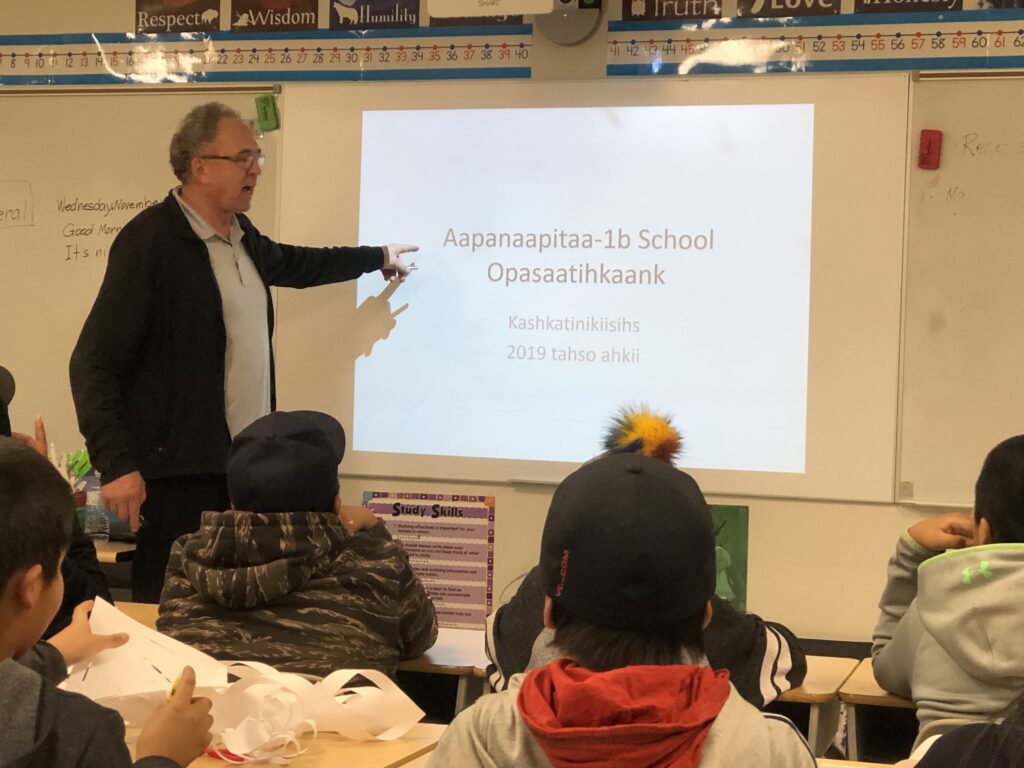
12. Besides live presentations, how can people learn about your work?
My goal is to develop an information system that can help the people of the region understand their heritage in detail on a generation-by-generation basis.
An information system would include a genealogical chart customized for each of the Pimachiowin Aki and other Berens River communities that portrays information on genealogical history and intermarriages between communities going back to the time of Treaty signing, and earlier where information is available.
Each individual genealogical chart would:
- Contain a significant amount of detail
- Demonstrate the inter-relatedness of these communities and portray family connections between communities in this region
- Reference photographs for individuals and their families where available
These charts could be used in the schools as well, sharing knowledge of the history of the region. Based on feedback received during presentations, this would represent a source of pride.
13. When will the information system be available?
The first charts will be several years from now at the earliest. I’m still in design stages, working at featuring the genealogical chart in a way that provides intelligence regarding in what community individuals may have been raised (giving consideration to inter-community marriages) and how to provide an easy reference to photographs featured in school hallways.
14. Do you have presentations planned for 2022?
Because of COVID, we haven’t been scheduling presentations. However, Dad and I are currently identifying names for approximately 300 photographs of people and places to be hung on the walls of Omishoosh School in Pauingassi. We’re in the early stages of identifying the names, which will be spelled phonetically, in syllabics, and English. We estimate the first names will be complete in a few months, after which Dad and I hope to schedule a trip to Pauingassi to participate in an opening ceremony for the display (Dad is 92 and so far, is healthy and could easily make such a trip).
If you have details or note any corrections to ancestral histories in this story, please contact Gerald Neufeld: gerald.neufeld4@gmail.com
Feature image: Gerald and Taki (Albert Pascal) in Paunigassi.
